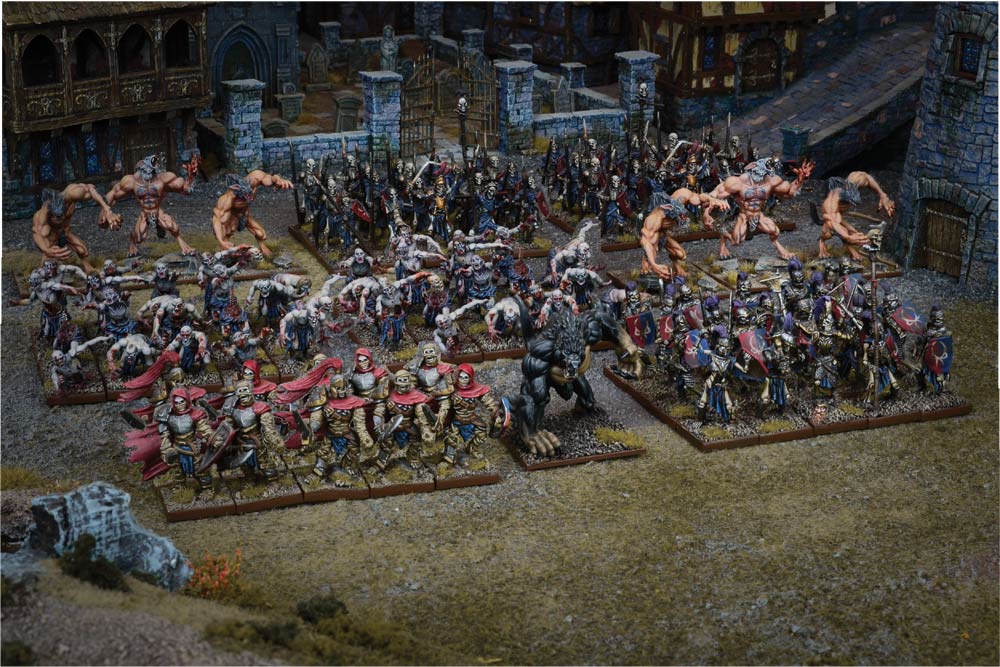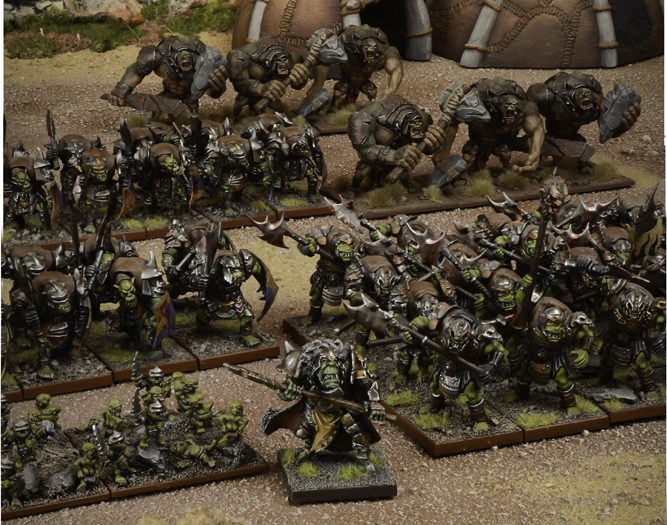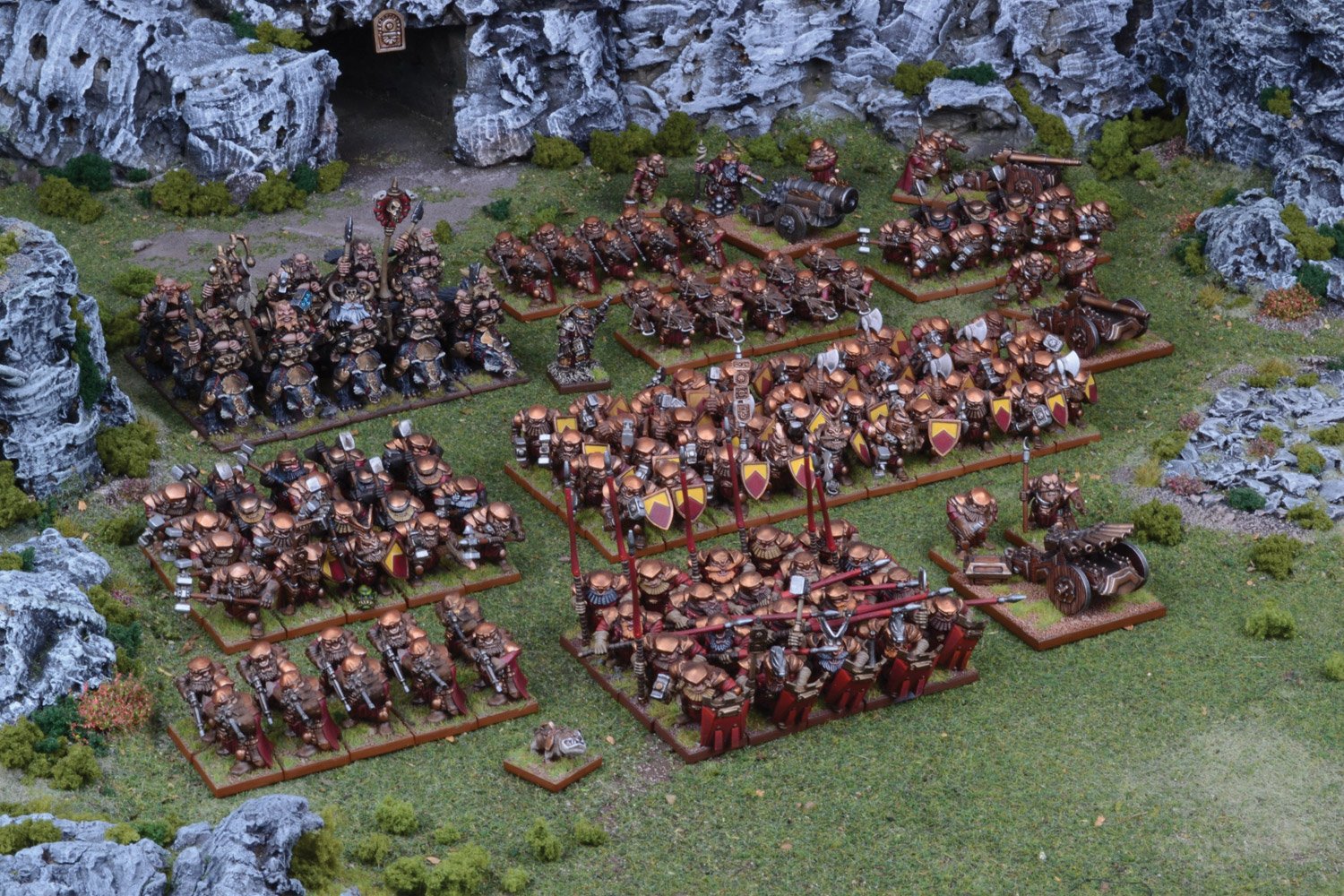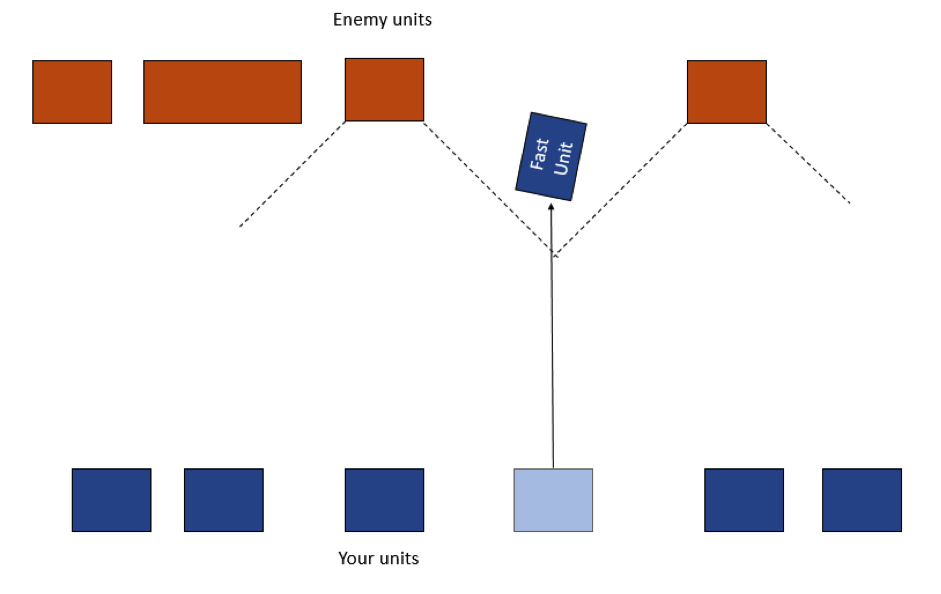Tactics Tuesday: Taking the First Turn in Kings of War
29th Aug 2017
Rob Burman
Kings of War aficionado and former Rules Committee member Nick Williams offers up some guidance on taking the first turn in Kings of War. This might be particularly useful if you're taking part in the current Edge of the Abyss campaign!
The first turn roll can end up being one of the most important dice rolls in the game. Not as immediately obvious as that game changing double 1, but certainly if you look back over a game it can be.
We had a question in the Kings of War Fanatics group on Facebook a little while back about why so many players will choose to take the second turn if they win the roll-off.
Last turn objective jump
Kings of War is a scenario driven game. It doesn’t matter how much of your enemy you rout if they’re able to claim one more objective than you. The scenario matters above all other considerations.
Having the last turn gives you the opportunity to choose how to win. You know which objectives are unguarded and which ones your opponent needs in order to win. All you need to do is to claim the unclaimed, push your opponent off their objectives, or dispute the ones that they need to win.
This is where the underutilised spell Wind Blast comes in handy for shoving your opponent’s units out of range of objective markers, or pushing them onto the edge of scoring zones so they no longer count (a unit only counts in scenarios like Dominate and Invade if they’re entirely within the scoring zone – if you can push them so they’re straddling the edge then they no longer count).

If there are unclaimed objectives, you can send whatever fast units you have to capture them. I’ve won oh so many games with a single surviving 80 point unit of gargoyles. If I’ve engaged the enemy and have a unit of gargoyles left alive, then I’ll hide them out of sight on the battlefield. On the last turn I’ll jump them on top of an objective.
If your opponent needs specific objectives in order to win, you can contest the objectives by simply moving your units with scoring range of the objectives. Remember that you only have to have a scoring unit within range of an objective in order to contest it. It doesn’t matter whether your opponent has a more expensive or higher unit strength unit within range, if you also have a unit then neither of you will get points for that objective. Again, jumping an 80 point gargoyle unit within 3” of a key objective that my opponent is holding on the last turn has won many games.
There’s also the obvious “kill the enemy units that are sat on key objectives” point too – but I thought that might be a bit too obvious to go into detail on!
Regardless, having the last turn means that you’re able to weigh up which objectives you either need to claim or deny in order to win the game.

Lose a turn of shooting
Your opponent has lots of 24” Reload shooting, or non-Reload shooting with an effective range under 24” (effective range = speed + weapon range). If you go first, then you’ll be advancing within their killing range. They then get the entire game to shoot at you.
If you go second however, then they effectively lose a turn. They either have to advance towards you, not being able to shoot because of Reload, or stay where they and end their turn without doing anything. They then have just 5 turns worth of shooting left in the game.
Now, it’s rare that your opponent only has 24” reload shooting. Usually they’ll have a mixture of ranges, some of it more than 24”. You have to weigh up whether it’s worth effectively denying their 24” shooting a turn while taking fire from the longer ranged units vs advancing closer and allowing them their full number of turns but getting closer to shutting down their longer ranged shooting.
There’s no perfect answer in this scenario. You just have to look at whether you can withstand the longer ranged shooting for a turn or if you really need to get to grips with them as soon as possible. If it were just a couple of bolt throwers, or a non-reload, non-Nimble horde of bows then I would probably withstand the shooting just to deny my opponent the extra turn of short range/reload shooting. If it were a horde or two of Ogre Crossbows, or 3+ units of Blast artillery then I would consider taking first turn.
Note that sometimes the placement of their longer ranged units can mean they’re only shooting with modifiers or not at all due to LOS. Again, no perfect answer but something to be taken into consideration.

Don’t lose a turn of shooting
The opposite of what I’ve just discussed - if you have 24” range Reload shooting, you probably want to take 2nd turn. If you don’t then you’re effectively losing a turn. If you’re going to spend your first turn doing nothing of note, give it to your opponent.
Fast Flank
As exciting as this article is so far, we’re going to ramp it up a notch. We’re going to really switch things up. You’re going to be on the edge of your seat for this. This is a reason why you should take the first turn...
You have a fast, nimble unit, such as a flyer or a horde of werewolves, with the ability to move into a blind spot on the first turn and threaten your opponent’s battle line.
This will usually come about if you out-deploy your opponent and have a clear run to a position where you will be out of range, arc or sight of enemy units, but still in a position where you can threaten their flanks. Example:

The dotted lines show the enemy's arc of sight. There’s a huge blind spot where your unit can move and be safe from being charged. If your opponent doesn’t want to get flanked, they’re going to have to pivot to deal with you, while the rest of your army just saunters up.
Even if you do nothing else that turn you can force them to completely re-arrange their battle line to face the threat. They either turn their units to face the threat on their flanks (meaning your main battle line gets at least one turn moving up without getting shot or threatened with a charge), or get flanked by your unit.
If you chose to go second, your opponent could potentially close that blind spot by making sure one of their units can charge you if you move there. Your opportunity to screw with your opponent’s battle line will be lost. Also if your opponent can advance into your blind spot with a fast, nimble unit, you probably want to go first to cover it!



